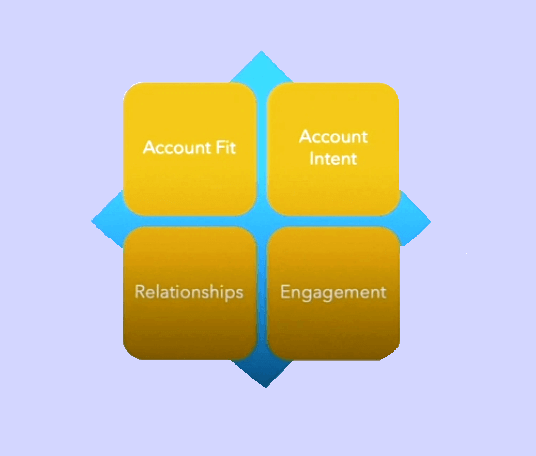After successfully creating your ideal customer profile (ICP), what next? You need to know how to score your target account list in order to determine your best fit accounts.
What is target Account List Scoring?
It’s the process of prioritizing your already created target Account List into a shorter list of accounts that present the greatest opportunity.
Target Account List scoring enables your organization to effectively channel its efforts and resources to only the best fit accounts with high purchase potential.
1. Traditional Target Account List Scoring
This is a systematic account scoring process that begins by going through your list of accounts and taking it through a scoring framework, like this one.

For instance, if your company is doing well with mid-size “Goldilocks” hospitals (not too big, not too small) who have Cerner as their EMR, you’ll give those mid-size healthcare systems higher scores than larger organizations using Epic and much higher scores than smaller organizations using Meditech.
Scoring Criteria
Each company will have its method of account scoring, depending on the nature of its business. The key is to develop a systematic framework that reflects your best practice in identifying best fit accounts.
You will determine filters that will allow you to use data to prioritize or de-prioritize accounts. There are four criteria to use in this process:
#1. Firmographics:
This first basic filter allows you to segment your target accounts based on traditional healthcare business attributes. Typical attributes include the number of beds, revenues, market segment, geography, etc.
#2. Sales History
With this criterion, you will filter accounts based on your history with them. For example, lapsed lead, active lead, or former customers.
#3. Positioning attribute
This is a critical step. This is where you apply key filters based on the unique characteristics of your business. For example, which EMR they use, your ability to integrate, and their HCAHPS scores.
It might also include the strength or vulnerability of an incumbent vendor that you are trying to displace. This is the criterion you want to spend the most time on.
#4. Behavior
This is where intent data comes in. I will cover this in detail in future posts but here is a blog post explaining it. Intent data gives you an indication of how actively an account is considering a purchase.
Are they in-market? This includes how actively they are engaged on your website, the content they download, and the videos they want
Weighting Target Account List Scoring
You then need to adopt a weighting score technique. This is based on the relative importance of the scoring criteria in your scoring framework.
You then compute the scores accordingly to get weight percentages for account prioritization. This traditional target account list scoring model works well and keeps your accounts organized.
2. Modern Target Account Scoring
With the advent of Artificial Intelligence (AI) in marketing, scoring and qualification of accounts is becoming much more data-driven. Target Account Lists are optimized in real-time. For example, one new dynamic technique called FIRE scoring is Demandbase‘s proprietary approach.

FIRE stands for account Fit, the F. Account Intent is the I, relationships, the R, and the level of Engagement, the E
Demandbase Approach allows you to:
- Develop a predictive model on your own by leveraging the data from your EMR
- Layering on Intent Data to identify who actually might be in-market.
- Looking at existing Relationships
- Analyzing Website Engagement Metrics so as to identify potential customers
So, with the new Demandbase’s methodology, you have multiple sources of data to give you real-time scoring.
In conclusion, ABM account scoring is a very important discipline. It is how you prioritize a long list of possible target accounts into a list of best fit accounts based on your knowledge and insights.
You can also watch a short video excerpt from my webinar with HIMSS, Best Practice in Targeting.

